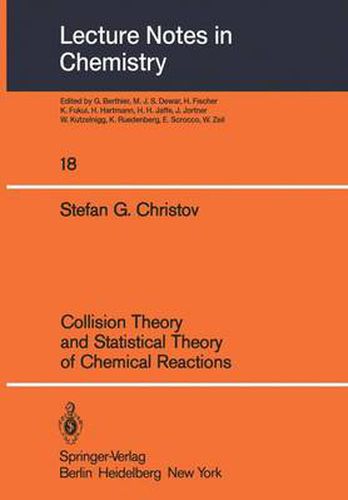Readings Newsletter
Become a Readings Member to make your shopping experience even easier.
Sign in or sign up for free!
You’re not far away from qualifying for FREE standard shipping within Australia
You’ve qualified for FREE standard shipping within Australia
The cart is loading…






This title is printed to order. This book may have been self-published. If so, we cannot guarantee the quality of the content. In the main most books will have gone through the editing process however some may not. We therefore suggest that you be aware of this before ordering this book. If in doubt check either the author or publisher’s details as we are unable to accept any returns unless they are faulty. Please contact us if you have any questions.
Since the discovery of quantum mechanics,more than fifty years ago,the theory of chemical reactivity has taken the first steps of its development. The knowledge of the electronic structure and the properties of atoms and molecules is the basis for an un derstanding of their interactions in the elementary act of any chemical process. The increasing information in this field during the last decades has stimulated the elaboration of the methods for evaluating the potential energy of the reacting systems as well as the creation of new methods for calculation of reaction probabili ties (or cross sections) and rate constants. An exact solution to these fundamental problems of theoretical chemistry based on quan tum mechanics and statistical physics, however, is still impossible even for the simplest chemical reactions. Therefore,different ap proximations have to be used in order to simplify one or the other side of the problem. At present, the basic approach in the theory of chemical reactivity consists in separating the motions of electrons and nu clei by making use of the Born-Oppenheimer adiabatic approximation to obtain electronic energy as an effective potential for nuclear motion. If the potential energy surface is known, one can calculate, in principle, the reaction probability for any given initial state of the system. The reaction rate is then obtained as an average of the reaction probabilities over all possible initial states of the reacting ~artic1es. In the different stages of this calculational scheme additional approximations are usually introduced.
$9.00 standard shipping within Australia
FREE standard shipping within Australia for orders over $100.00
Express & International shipping calculated at checkout
This title is printed to order. This book may have been self-published. If so, we cannot guarantee the quality of the content. In the main most books will have gone through the editing process however some may not. We therefore suggest that you be aware of this before ordering this book. If in doubt check either the author or publisher’s details as we are unable to accept any returns unless they are faulty. Please contact us if you have any questions.
Since the discovery of quantum mechanics,more than fifty years ago,the theory of chemical reactivity has taken the first steps of its development. The knowledge of the electronic structure and the properties of atoms and molecules is the basis for an un derstanding of their interactions in the elementary act of any chemical process. The increasing information in this field during the last decades has stimulated the elaboration of the methods for evaluating the potential energy of the reacting systems as well as the creation of new methods for calculation of reaction probabili ties (or cross sections) and rate constants. An exact solution to these fundamental problems of theoretical chemistry based on quan tum mechanics and statistical physics, however, is still impossible even for the simplest chemical reactions. Therefore,different ap proximations have to be used in order to simplify one or the other side of the problem. At present, the basic approach in the theory of chemical reactivity consists in separating the motions of electrons and nu clei by making use of the Born-Oppenheimer adiabatic approximation to obtain electronic energy as an effective potential for nuclear motion. If the potential energy surface is known, one can calculate, in principle, the reaction probability for any given initial state of the system. The reaction rate is then obtained as an average of the reaction probabilities over all possible initial states of the reacting ~artic1es. In the different stages of this calculational scheme additional approximations are usually introduced.